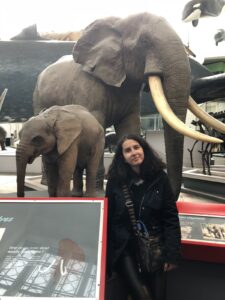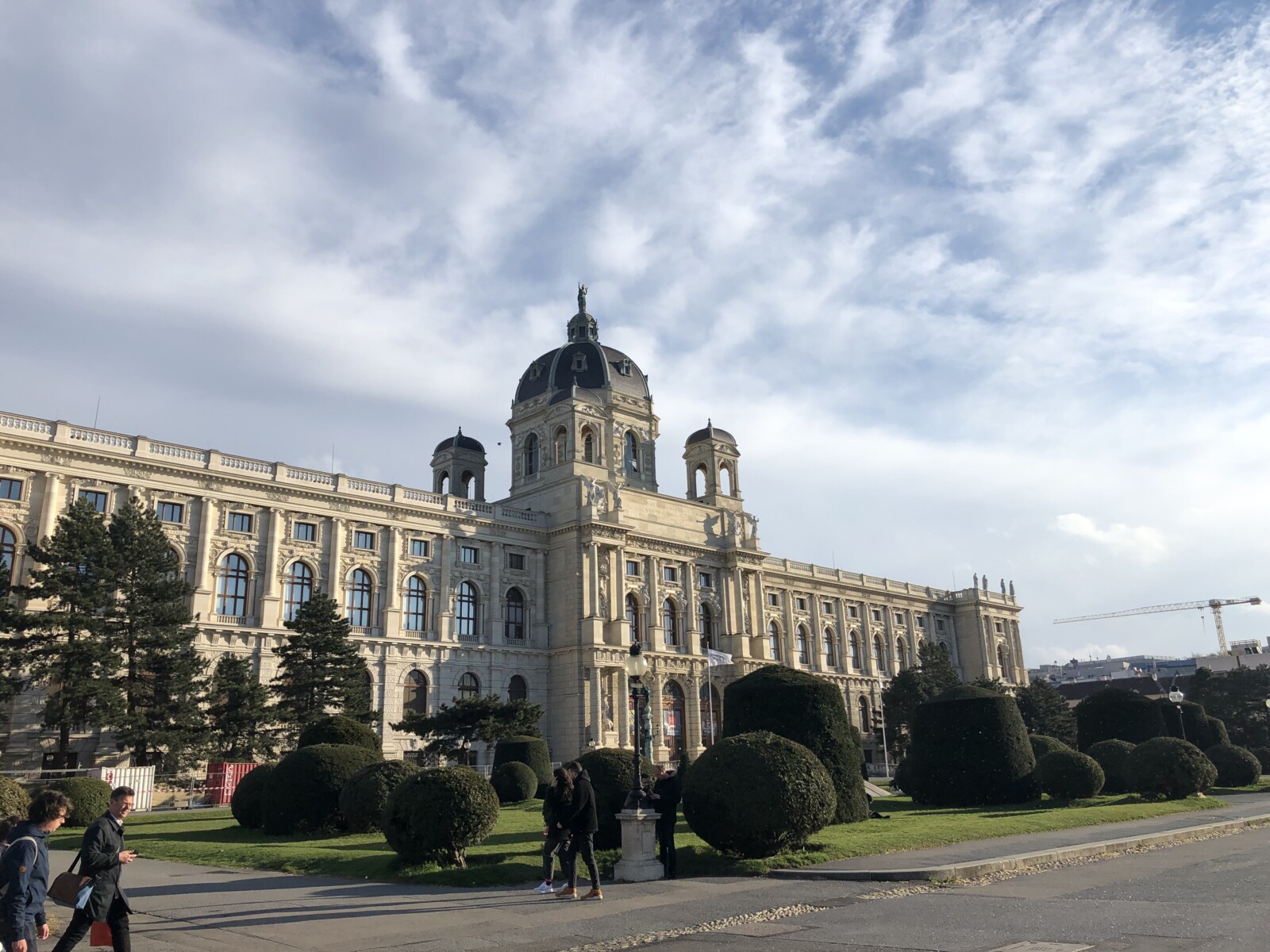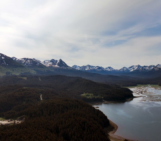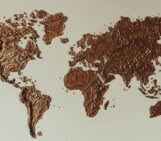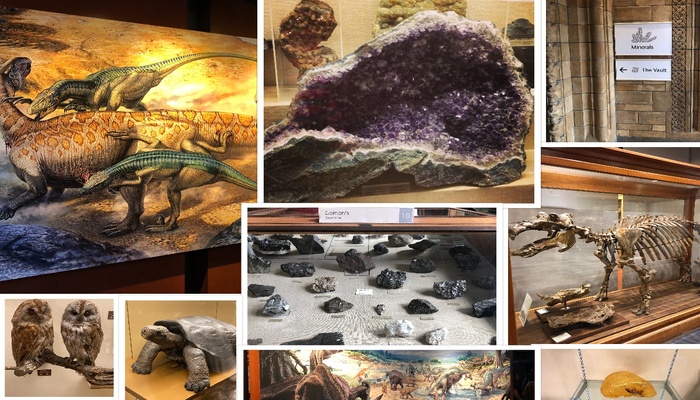
Have you ever wondered how to combine adventure with a deep dive into the secrets of our planet’s ancient past? Well, in this week’s blog, we are on a mission to take you on a journey to some of my favourite Natural History Museums around Europe. And who knows, maybe these museums might find a special place on your next travel bucket list!
Travelling makes us wiser and richer!
Getting the opportunity to explore new territories and cultures is quite magical. However, have we ever considered that when we set foot on a new place, we do not pay that much attention to its evolution through the course of time? How many of you wanted to learn more about its geological history and find treasures from the past by understanding the present?
Well, the answer is very simple. Plan a visit to a Natural History Museum (NHM) to discover a unique journey through time and space, and you will never regret making that decision again. Natural History Museums are true treasure troves filled with the unparalleled beauty of cultural and geological heritage exhibits that showcase the wonders of the natural world, but they can also offer a glimpse into the past, present, and future of our planet. From ancient fossils to stunning mineral collections, these museums provide insight into the geological forces that shaped Earth.
Therefore, whether you are a curious traveller, a history enthusiast, or a geoscience lover, these museums can captivate you and offer an unforgettable experience during your visit. Europe is proud to host a great number of fantastic Natural History Museums with a rich history and vast scientific collections of minerals, fossils, and natural wonders of our planet. And that is why, in this week’s blog we will take you to a few of my favourite NHMs in Europe that can open up a new world of the Earth’s evolutionary past. Buckle up!
1. The Natural History Museum, London – United Kingdom
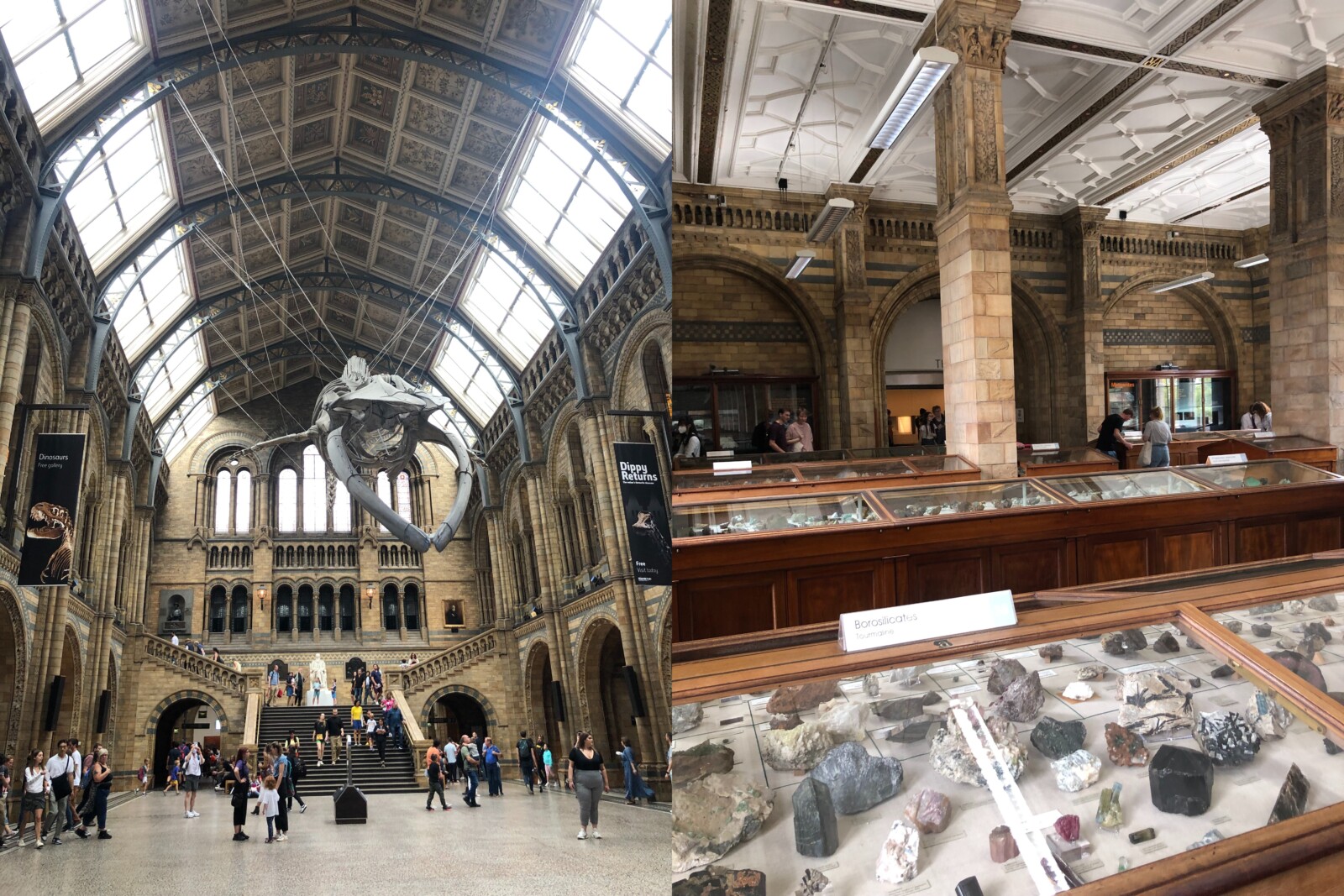
The breathtaking entrance hall of the NHM in London (Left photo: Kleoniki Lydia Theodoridou). The Mineral Gallery exposition on the upper first floor of the museum (Right photo: Kleoniki Lydia Theodoridou).
One of the most iconic Natural History Museums in the world-and personally, my favourite of all time. The NHM in London can cast a spell on anyone by its magnificent architecture as well as the numerous collections of different exhibits, data services, and other science and educational activities that can transform your visit into a one-in-a-lifetime experience while diving into the Earth’s history. The Natural History Museum in London stands as one of the world’s most important centres for geoscientific research and education. The museum also offers excellent career opportunities for early career researchers in different scientific fields, volunteering opportunities, as well as memberships that can support all of its activities (Join and Support, Natural History Museum, 2025).
Moreover, the museum’s Geology collections span millions of years and cover everything from the formation of the Earth to the fossilised remains of prehistoric creatures. A must-visit is the Earth’s Hall, where visitors can learn about the planet’s internal structure, tectonic processes, and volcanic activity. Then, the Minerals Gallery and the Vault, in which you can admire some of the world’s most extraordinary mineral specimens, this exhibit offers a comprehensive look at the Earth’s mineral wealth. Last but not least, we could not miss the Dinosaurs and Fossils exhibitions, where these galleries feature massive dinosaur skeletons and extinct mammal remains, shedding light on the ancient environments they lived in (Explore the Museum, Natural History Museum, 2025).
Natural History Museum – London
Website: https://www.nhm.ac.uk/
Free entrance
Cromwell Road
London SW7 5BD
2. The Natural History Museum of Vienna – Austria
One of Vienna’s most important cultural institutions, the Natural History Museum (Naturhistorisches Museum Wien) is home to an astonishing variety of exhibits. With over 30 million objects in its collection, the museum covers everything from minerals and fossils to ancient cultures and human evolution (Naturhistorisches Museum Wien, Mission Statement, 2025). Vienna is a city steeped in cultural history, and the Museum of Natural History is a genuine testament to that. It boasts one of the largest mineral collections in the world, alongside impressive paleontological and zoological exhibits. The museum’s collection of meteorites and its mineral galleries are particularly impressive, making it a top destination for a visit while you are in the city (Naturhistorisches Museum Wien, Special Exhibitions, 2025).
In addition, the museum’s elegant architecture makes it an experience in itself, blending history with modern science. A must-visit is the impressive museum’s Café Restaurant in the Upper Dome Hall, where you can enjoy your coffee along with exquisite Viennese pastries in one of the most splendid places in Vienna taking you back in time. The Natural History Museum is not just an exploration of Vienna’s history, but also a detailed look at the forces shaping Earth’s geology that will change the way you see everything around you.
Naturhistorisches Museum Wien-Natural History Museum Vienna
Website: https://nhm-wien.ac.at/en
Entrance: Buy tickets, free entrance, or discounts for a few exemptions
Burgring 7
1010 Vienna; Austria
Tel.: + 43 1 52177 – 0
3. Natural History Museum of the University of Padua – Italy
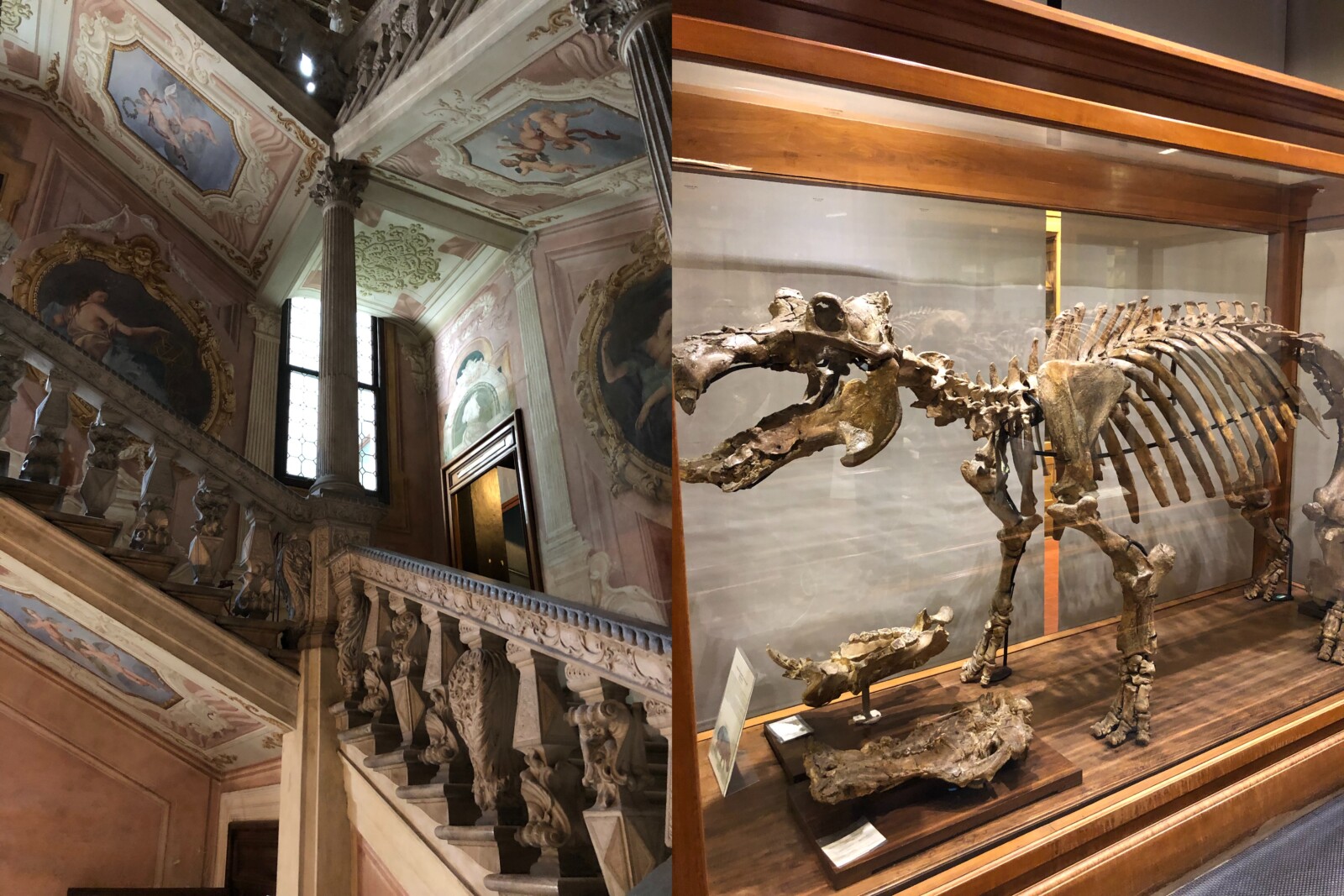
The incredible monumental staircase with the wonderful fresco decorations in Palazzo Cavalli, where today is located the NHM of the University of Padua (Left photo: Kleoniki Lydia Theodoridou). The vertebrate fossils collection includes more than 10,000 items (photo: Kleoniki Lydia Theodoridou).
The Natural History Museum of the University of Padua, located in the historic city of Padua, Italy, is a hidden gem that combines centuries of scientific research with rich collections from the natural world. Established in the early 19th century, this museum provides a captivating experience for anyone interested in geology, palaeontology, zoology, and the remarkable biodiversity of Italy and beyond (Museum of Nature and Humankind, Natural History Museum of the University of Padua, 2025). As one of Italy’s oldest and most significant natural history museums, it serves not only as a window into Earth’s past but also as a key resource for scientific study and public education.
The NHM houses a collection of over 300,000 specimens, many of which are of great historical and scientific value. You can find yourself lost in different thematic sections ranging from minerals and gemstones captivating your heart to fossils dating back millions of years ago, and fascinating zoological and botanical specimens illustrating the variety of life on Earth (Earth, a vast evolving system,2025). Last but, certainly not least, the museum is housed in the Palazzo Cavalli in Padua, an 18th-century building that adds a touch of grandeur to the experience. Located in one of Italy’s most historic cities, a visit to the museum offers both an educational and cultural experience that’s sure to leave a lasting impression (The Hall of Palms and the Treasures of Palazzo Cavalli, 2025). So, if you find yourself in Padua, don’t miss the chance to step into this incredible institution and discover the wonders of natural history firsthand.
Natural History Museum of the University of Padua-Museo della Natura e dell’uomo
Università di Padova
Website: https://visitmnu.it/en/
Entrance: Buy tickets, free entrance, or discounts for a few exemptions
Corso Garibaldi, 39 – 35121 Padova
Tel. +39 049 8273939
4. Goulandris Natural History Museum – Athens, Greece
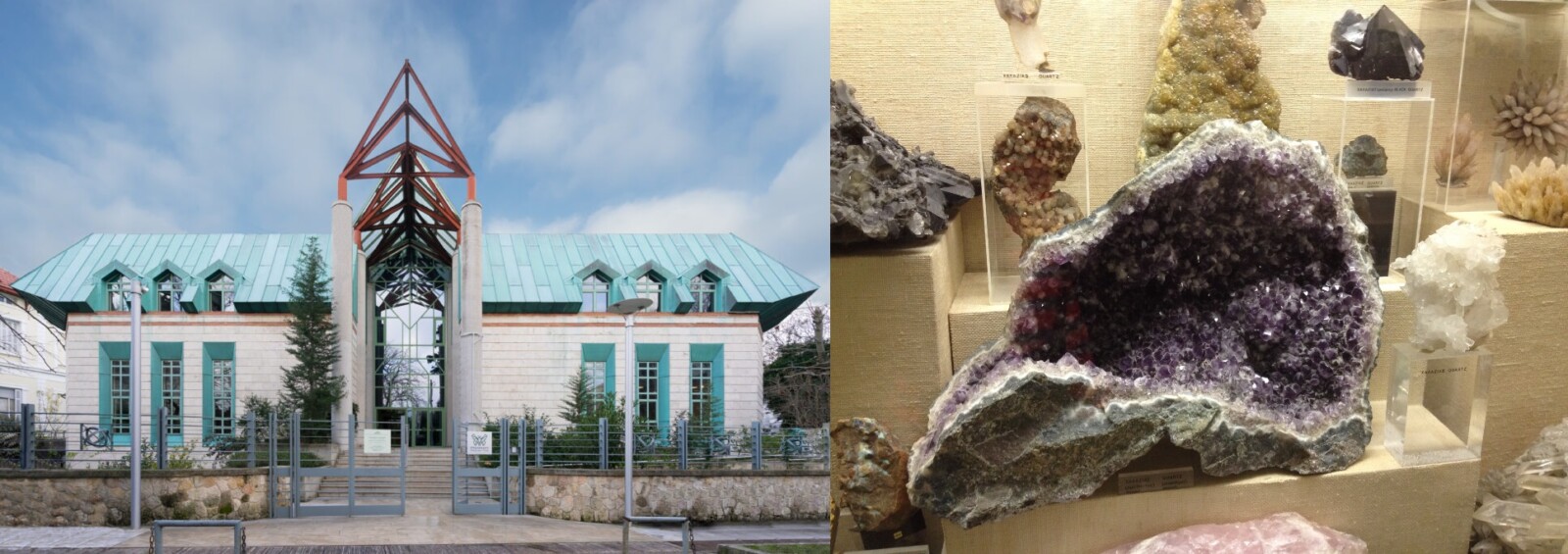
Exterior view of the Goulandris Natural History Museum in Athens (Left photo: Ilias Beros). Mineral collections of the museum – a Geode Amethyst (Right photo: Kleoniki Lydia Theodoridou).
The Goulandris Museum of Natural History offers a fascinating journey into the natural world of Greece and beyond. As one of the premier cultural institutions in the country, this museum is a must-visit for anyone passionate about the Earth’s history, biodiversity, and the scientific wonders that shaped our planet. Founded in 1964, the Goulandris Museum of Natural History aims to educate the public about the diverse natural environment of Greece, as well as its broader ecological and geological context. The museum offers an immersive experience that blends cutting-edge scientific research with stunning displays, featuring everything from the country’s unique flora and fauna to geological formations that span millions of years (Historical Background, Goulandris NHM, 2025).
The museum is home to a wide array of exhibits catering to various interests within the natural sciences, with a particular focus on geology, palaeontology, and biology. Therefore, you can wander through its permanent and temporary exhibitions showcasing unique findings and specimens from Greece and beyond. Additionally, the museum offers a variety of educational programs, including workshops, seminars, and guided tours. These are designed for students, professionals, and families alike, helping to deepen the understanding of the natural world through interactive learning (Natural History Exhibitions Program, 2025). Therefore, visiting this museum will not only enrich your understanding of natural history but also give you a deeper appreciation for the extraordinary landscapes and ecosystems that make Greece such a unique and fascinating destination.
Goulandris Νatural History Museum – GAIA Centre
Website: https://www.gnhm.gr/en/home-page/
Entrance: Buy tickets, free entrance, or discounts for a few exemptions
Othonos 100, Kifisia 145 62
Tel. Information: +30 210 8015870
As we can see, these museums bring the wonders of nature to life through exhibits that blend science, history, and art. Whether you’re admiring ancient fossils, learning about biodiversity, or diving into the mysteries of the universe, these museums provide an enriching and unforgettable experience. So, waste no time and embark on a journey through Europe’s Natural History Museums for an adventure of a lifetime.
References Earth, a vast evolving system,2025. Available at: https://visitmnu.it/en/tema/earth-a-vast-evolving-system/. (Accessed: 8 Feb. 2025). Explore the Museum, Natural History Museum, 2025. Available at: https://www.nhm.ac.uk/visit/galleries-and-museum-map.html. (Accessed: 10 Feb. 2025). Join and Support, Natural History Museum, 2025. Available at: https://www.nhm.ac.uk/support-us.html (Accessed: 10 Feb. 2025). Historical Background, Goulandris NHM, 2025.Available at: https://www.gnhm.gr/en/the-museum/identity-history/. (Accessed: 8 Feb. 2025). Museum of Nature and Humankind, Natural History Museum of the University of Padua, 2025.Available at: https://visitmnu.it/en/. (Accessed: 10 Feb. 2025). Natural History Exhibition Programs, 2025. Available at: https://www.gnhm.gr/en/education/natural-history-permanent-exhibition/. (Accessed: 10 Feb. 2025). Naturhistorisches Museum Wien - Mission Statement, 2025. Available at: https://www.nhm-wien.ac.at/en/mission_statement. (Accessed: 10 Feb. 2025). Naturhistorisches Museum Wien - Special Exhibitions, 2025. Available at: https://nhm-wien.ac.at/en/exhibitions/special_exhibitions. (Accessed: 10 Feb. 2025). The Hall of Palms and the treasures of Palazzo Cavalli, 2025.Available at: https://visitmnu.it/en/tema/the-hall-of-palms-and-the-treasures-of-palazzo-cavalli/. (Accessed at: 8 Feb. 2025).

